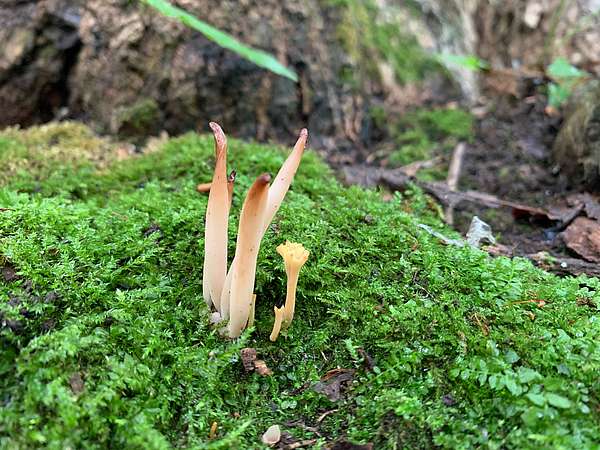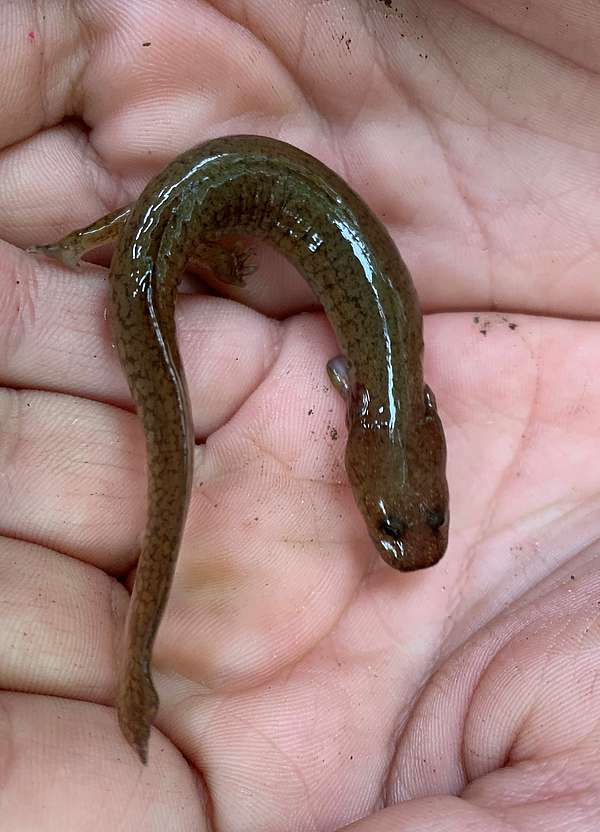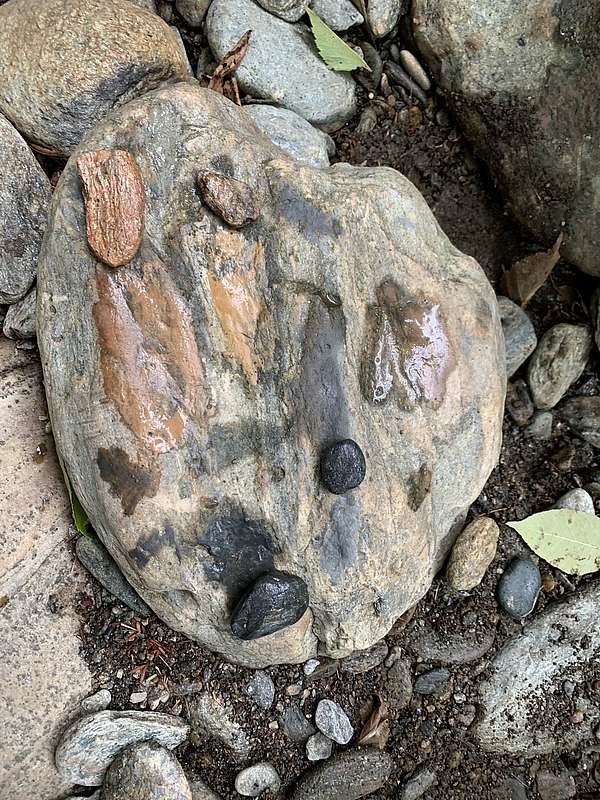Last Tuesday I went on a walk through Kirchner and Wiessner. It was a beautiful day to get outside, especially after the rain from the night before. Rain brings out lots of fun and exciting things to the forest floor. I always notice an abundance of fungi popping up after a heavy rain.
I saw several species of fungi at Kirchner Woods of all different shapes, sizes, and colors! One type of fungi that I have seen a lot this summer, especially Kirchner Woods, is the Scarlet Waxy Cap. My fungi identification skills are a bit rusty, so fingers crossed that someone can help me identify these species soon!
Wiessner Woods has been one of my favorite places to explore in Stowe. The interpretive signs that are located there are a fun and easy way to learn more about the plants on the property! Every time time I am at Wiessner, I also see an abundance of amphibians including American Toad (Anaxyrus americanus), Red eft (Notophthalmus viridescens), and Red-backed salamanders (Plethodon cinereus).
We visited the Mill Trail and did a short walk/adventure talking about the history of the property. We spoke briefly about Indigenous history on the land (if you know more, please let me know!) and looked at the historic remains on the property. Some of the historic remains that are still present are: the cellar hole (from Sallies’ Farm: 1820-1858), the old foundation of a blacksmith’s shop (from Orlando Turner’s Sawmill and Tub Factory: 1865-1890s), and the cabin (built by Marguerite “Doc” Lichtenthaeler and Helen Day Montenari in 1935). After our history walk, the students had time to complete a scavenger hunt and explore . A big hit was going down to the West Branch of the Little River and looking for salamanders, water bugs, and finding painting rocks.
Not sure what painting rocks are? I didn’t either until I started at SLT! Painting rocks are a type of rock called shale. Shale is a type of rock that is formed by clay and mud sediment. If you find shale, dip the corner of the rock in water and rub it against another rock. The friction of the rocks leaves sediment behind which you can use to paint! The 4th graders found a variety of different colored shale and made pink, red, grey and black paint.
If you would like to know more about the history of the Mill Trail, drop by my last open on September 21st. I will take you on the tour of the property and then we will make wildflower seed balls and talk about pollination!


